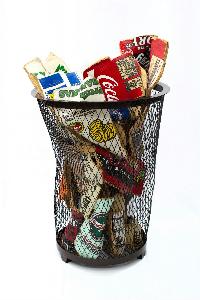Kimiyo Mishima
三島喜美代;Kimiyo Mishima
Place: Osaka
Born: 1932
Biography:
Kimiyo Mishima is a contemporary Japanese artist, best known for creating highly realistic versions of 'breakable printed matter' in ceramic such as newspapers, comic books and boxes out of clay. Mishima began her artistic career as a painter in the early 1960s, then started working in ceramics in 1971. At this time, she began to use the silk screen technique to print newspaper and ad poster images onto clay. Her use of manufactured objects shows parallels with the works of Claes Oldenburg and Andy Warhol, as well as postwar Japanese collectives Gutai and Dokuritsu Art Association. Mishima was born in 1932 in the Juso district, a downtown area of Osaka City. Her family owned a liquor store, so she grew up relatively well off. She took lessons in Nihon-Buyo, classical Japanese dance, but her teacher often scolded her for making up her choreography. She said she wanted to dance like Mercier Cunningham, the famous American modern dancer, 'but my teacher would get angry. I realized that to dance, you need music and that if I wanted to do something alone, it could probably only be art.' As a child, Mishima was not one to play with dolls. Her father bought her several microscopes, and she often used them to look at her hair and insects. She would often crush bugs and put them under the microscope to observe. In middle school, her homeroom teacher happened to be her art teacher and she started painting. She was inspired by the works of Jasper Johns and Robert Rauschenberg. In 1975, she started working in ceramics. She began to use the silk screen technique to print newspaper and ad poster images onto clay. Her use of manufactured objects shows parallels with the works of Claes Oldenburg and Andy Warhol, as well as postwar Japanese collectives Gutai and Dokuritsu Art Association. Mishima's artistic practice stems from two fears: that the human footprint will overwhelm the natural environment; and that she may have lost her individuality in the mass-produced world. She has had numerous solo and group exhibitions in Japan and internationally. Her works are held in permanent collections of museums and public institutions around the world.

